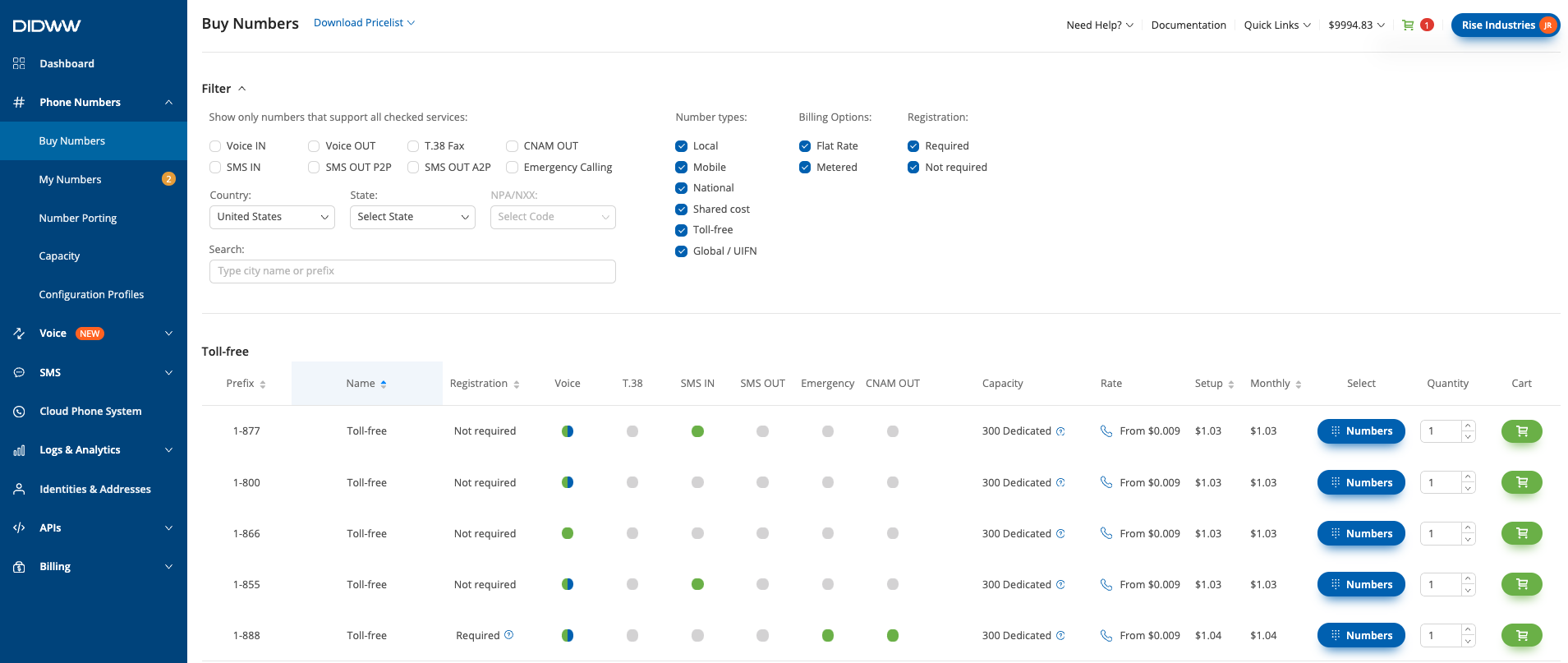Object: Caller Router
The Caller Router object allows incoming calls to be forwarded to different objects, depending on the originating phone number or CLI (Calling Line Identity). Users have the option of matching complete phone numbers, or forwarding calls according to number prefixes.

Fig. 1. Caller Router
Caller routing is based on a simple “Allow/Disallow” logic, depending on the setting of the “behavior” indicator associated with each listed number/prefix. The Caller Router object must be connected to two child objects such as Ring Group or Voicemail objects, to which calls are forwarded according to this “Allow/Disallow” logic.
The Caller Router object includes both green (“Allow”) and red (“Disallow”) right-hand sockets for cable connections. A cable originating from the green socket corresponds to the “Allow” option, while a cable originating from the red socket corresponds to the “Disallow” option.
In the figure below, the Caller Router object is configured to include the phone number prefixes 1416, 1437, and 1647, with the “behavior” set to “Allow” for all the listed prefixes. Therefore, if incoming calls are received with a CLI matching any of these prefixes, then those calls are routed via the green socket to the Toronto Voice Menu. All other incoming calls are sent to the Ontario Voice Menu.

Fig. 2. Caller Router Implementation
The information to be entered for this object is:
Name: The name of the Caller Router object.
Default Route: Specifies which route (“Allow” or “Disallow”) to which the call will be forwarded if the incoming phone number does not match any of the configured routing rules.
Algorithm: An algorithm to be used for number routing, with the options being “Prefix” or “Number”. “Prefix” matches are determined according to “number starts with” logic, while “Number” matches require an exact CLI match. Note that either the “Prefix” or “Number” option may be selected, and these algorithms may not be mixed on a single Caller Router object.
Numbers and Behavior: A list of phone number/s or prefix/es required for the caller routing logic, together with an “Allow/Disallow” indicator that defines the call routing behavior for that specific number or prefix. Alphanumeric inputs (both letters and numerals) are supported, with letters being case sensitive. There are no limitations on the format (such as E.164) or the number of characters used in listing these phone numbers/prefixes, so as to allow for maximum flexibility in CLI matching. Multiple numbers or prefixes may be added as required.

Fig. 3. Caller Router Object creation
In the figure above, incoming calls with a CLI prefix of 1647 or 1416 will be forwarded to the object connected to the green (“Allow”) socket of the Caller Router object, while calls having a prefix of 1514 will be forwarded to the object connected to the red (“Disallow”) socket.
Phone numbers or prefixes previously added to the Caller Router object may be deleted by clicking on the “X” icon to the right of the number.